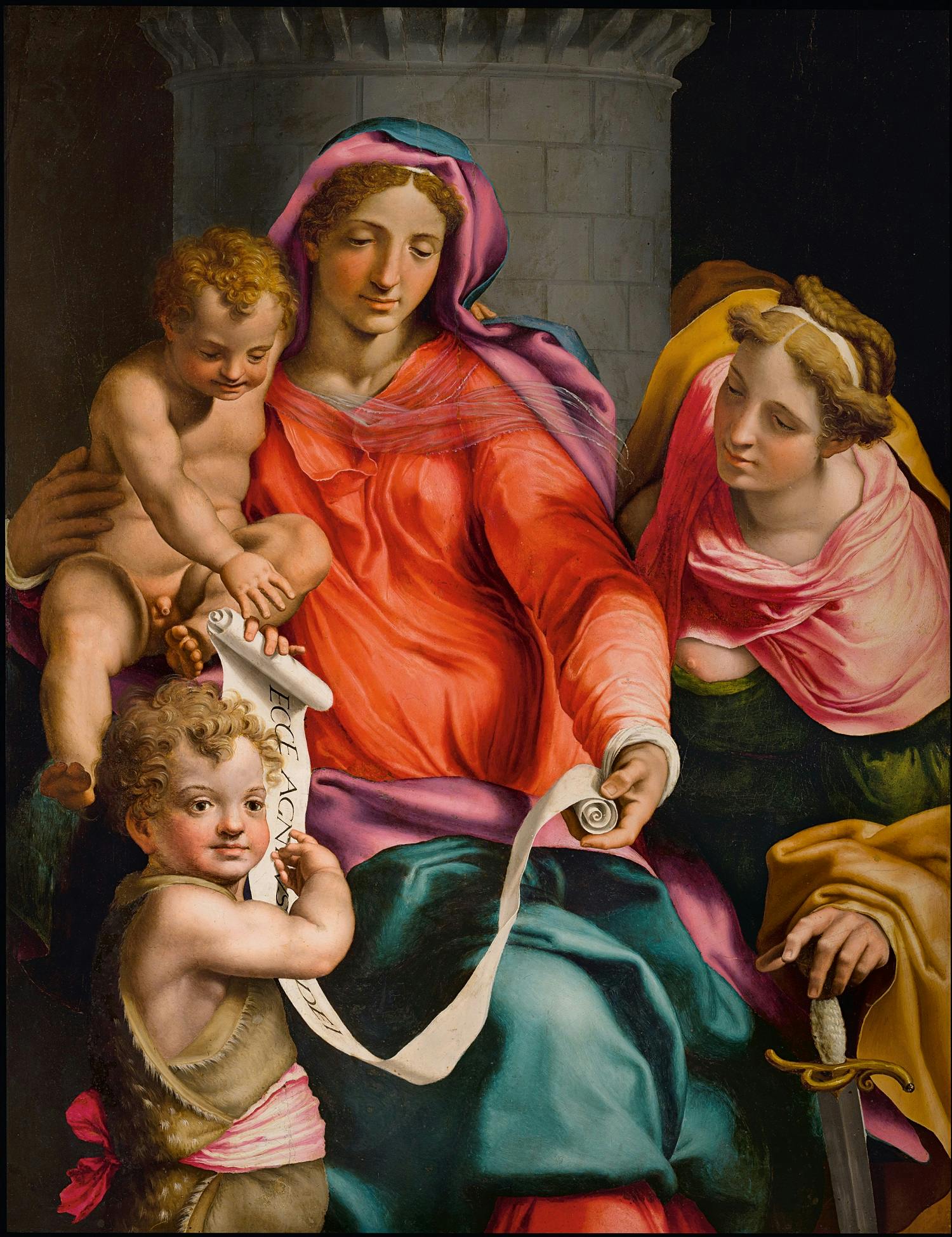Madonna and Child, Young Saint John the Baptist and Saint Barbara
Daniele Ricciarelli known as Daniele da Volterra (Volterra 1509-Rome 1566))
The cylindrical bulk of a grey stone tower acts as a backdrop to the monumental figure of the Virgin, leaning on a seat while holding Jesus in her arms and helping Saint John to unroll the long scroll on which the inscription "ecce agnus dei" is written. To their right stands Saint Barbara in a striking array of a green robe coupled with a pink shawl and a large ochre mantle, and her square face with a hairstyle evocative of an antique statue stands out. Barbara is a key figure in this painting, as the painter assigns her a somewhat acrobatic pose, moving her forward from the back with a shortened movement that defines the depth of the space. The tower is the symbol of her tragic story, the place where the girl, according to medieval legend, was locked up by her father to force her to renounce the Christian faith she had converted to. When she refused, she was subjected to all sorts of tortures, including the dismemberment of her breasts: this explains why the neckline of the robe is lowered to show her nipples.
With Elijah in the Desert (Inv. 1890 no. 10744) and the Massacre of the Innocents (Inv. 1890 no. 1429), both conserved in the Uffizi, this is one of the few examples on a moveable support created by Daniele Ricciarelli, who in the course of his career favoured fresco painting, stucco decoration and even bronze work. By the mid-1540s, the time this panel was created, Daniele had settled in Rome and was establishing himself as an independent master after working in the workshop of Perin del Vaga, the most brilliant genius in Raphael's workshop. It is to Perino's world, his fantasy in composing stories and his sophisticated painting that Daniele owes his ability to connect the four figures in a single circular and harmonious movement. But the sculptural forms, as if sculpted in colour, are based on Michelangelo's study and on the profound understanding of the Final Judgment, frescoed a few years earlier on the back wall of the Sistine Chapel. Hence the use of carefully calculated foreshortenings, such as the arm of the Virgin interrupting the space by coming forward to support the cartouche of young St John the Baptist, the position of Saint Barbara, or the momentum of Jesus. It is ultimately a very thoughtful and slow painting - Daniele, in fact, took a long time to complete his commissions - which contrasts with the fast and vibrant manner of Perino or Francesco Salviati, champions of the 'sprezzatura' so generously praised by Vasari.
B. Agosti, V. Romani, Daniele da Volterra. The D’Elci paintings , Münich 2016 (con bibliografia precedente)
